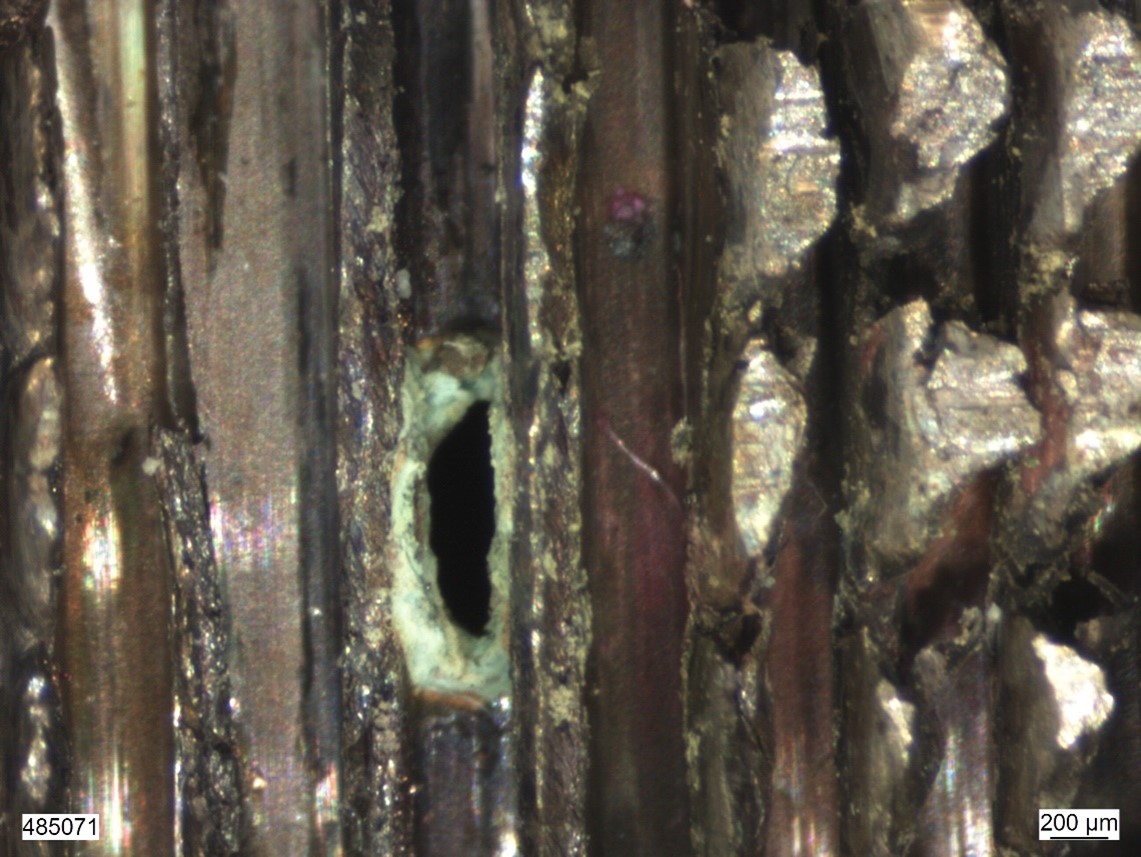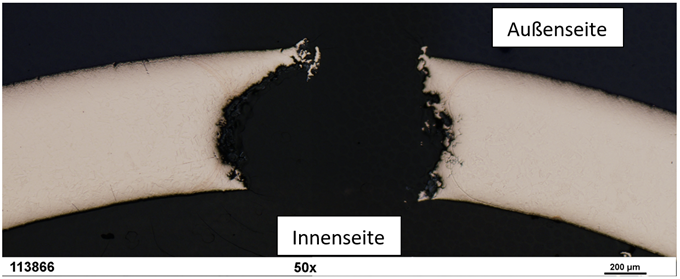Damage analysis on heat exchangers
Heat exchangers play an important role in many products that are crucial to the energy transition by transferring heat from one material to another. They can be found, for example, in flue gas/exhaust air heat recovery, in heat pumps (evaporators and condensers), or in storage boilers in solar thermal systems. Depending on the application, heat exchangers come into contact with different media (gaseous, liquid, sometimes with phase transitions). Thermal expansion of the components occurs as a result of temperature changes, which can lead to local mechanical stresses. Corrosion damage may also occur as a result of the interaction between pretreatment and installation and the media used. This can lead to system failure. At Fraunhofer IWM, the cause of these failures can be determined — the case of damage to a shell-and-tube heat exchanger that was used as the condenser of a large refrigeration machine will serve as an example (see Fig. 1a-1c).
Large refrigerant losses had occurred in the heat exchanger; an endoscopic examination revealed that there was a leak between the water side (well water inside the tubes) and the refrigerant side (outside the tubes) in one of the tubes made of CuNi10Fe1Mn. This material is considered to have good corrosion resistance, but in this case, a corrosion breakthrough had occurred. After this tube was removed and the openings in the tube walls were closed, the leak could be investigated more closely.
Investigations revealed that a local electrochemical element had formed under a washed-in iron oxide (rust) particle, which in combination with the relatively aggressive well water had caused the material to dissolve. Based on the damage analysis, corrective action was taken. In this case, a fine filter was installed in the water inlet to prevent particles from being washed in.
In yet another event of damage, a plate heat exchanger failed. Pitting had occurred in the copper elbows, resulting in a leak. As the metallographic sections showed, the pitting started on the inside of the copper tubes in contact with the water (see Fig. 2).
There is always a combination of circumstances that cause pitting corrosion of copper:
- Water quality
- Material quality
- Operating conditions
- Surface condition
According to the literature, pitting in copper water service lines is promoted by:
- Acidic, soft water
- High flow velocity
- Water oxygen content > 0.1 g/m³.
- Non-oxygen-free copper material
- Carbon films on the surface in contact with water, usually due to the manufacturing process (pyrolysis of drawing grease residues during annealing).
In this case, the medium used was demineralized water mixed with a special corrosion inhibitor for copper. It meets the criterion of "acidic, soft water". Pure demineralized water is low in ions. If it comes into contact with minor impurities (contact with air or an incipient corrosion process may be sufficient here), these are not buffered, i.e. the pH value changes accordingly, which can significantly promote further corrosion. When tap water flows through the copper tubes, a protective layer of copper carbonate forms on the inside, preventing corrosion attacks. This is not possible with demineralized water. In addition, corroded grain boundaries were found near the pitting, indicating that the grain boundaries of the copper used were covered with foreign elements. It was not easy to determine whether carbon films were present on the inside of the pipe.
In this case, the corrosion was caused by a combination of several unfavorable circumstances.
 Fraunhofer Institute for Mechanics of Materials IWM
Fraunhofer Institute for Mechanics of Materials IWM


